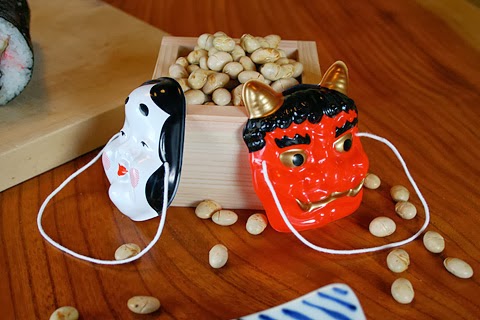This should have gone up a while ago. Oops!
The New Year celebration in Japan is different than New
Year in the States. Here, I feel like there is a greater importance placed on the
changing of the year and the symbolism of “new” year. There are multiple ways the changing from one
year to the next is commemorated here. I will try to give a succinct
description of some of them , but honestly you could write a whole book delving
into the specifics.
Food
New Years day food preparations take hours and hours of work
to put together and include a specially prepared group bento called a “Osechi”.
It contains herring roe, dried Japanese anchovies, sweetened black soybeans, crushed
burdock root, sweet pure of chestnuts and sweet potato, shrimp, and steamed
fish paste. Each has a specific reason
for being in the meal and has importance. Alongside the osechi sushi or sashimi
is served and also rice cake (mochi) soup that is made differently depending on
the region.
Bells
At midnight on December 31,
Buddhist temples all over Japan ring their bells a total of 108 times to
symbolize the 108 human sins in Buddhist belief, and to get rid of the 108
worldly desires regarding sense and feeling in every Japanese citizen.
First
The new
Year brings the first time something will happen in the particular year, many
of these thing are celebrated. An example of this is the first sunrise of the
year. Before sunrise on January 1, people often drive to the coast or
climb a mountain so that they can see the first sunrise of the New Year. Here
in Tokushima people watched it over the Yoshino River or on top of Mt. Bizan
Hatsumōde is the first trip to a shrine or temple. Many people visit a shrine
after midnight on December 31 (when they bells can be heard) or sometime during
the day on January 1. People pray for their safety and for peace in the New
Year.
Mochi
I mentioned the making of Mochi in a previous post but didn’t
quite realize its significance at the time. During the New Year celebration mochi
is not only eaten in the New Year meal but also used in decorations and hold symbolic
meaning. The mocha is stacked and places with pine fronds and oranges on a pedestal
as an offering for prosperity and longevity.
Postcards
New Year post cards are sent out similarly to Christmas
cards in the states. They often have pictures of the New Year’s zodiac animal
on them or a family picture. This year’s animal is the horse so we got a few
postcards with horses on them wishing us luck in the new year. They post cards
are often written one by one and in calligraphy.
Otoshidame
A gift of money is given to children in special paper
envelopes on New Year’s Day. Every child in a family receives the same amount
of money, usually around $100 dollars
We celebrated New Year ’s Eve by going down to the Shinmachi arcade by the river. We saw live music, ramen eating contest and lively hosts. We ate some roasted sweet potatoes and walked down the boardwalk where there were vendors sell street food and local goods. They handed out helium balloons and projected a live countdown on a large screen. At the stroke of midnight we let the balloons into the air and streamers shot into the sky alongside fireworks. We rode out bike home shortly afterward and could hear the bells ringing from the nearby temples.



.jpg)















